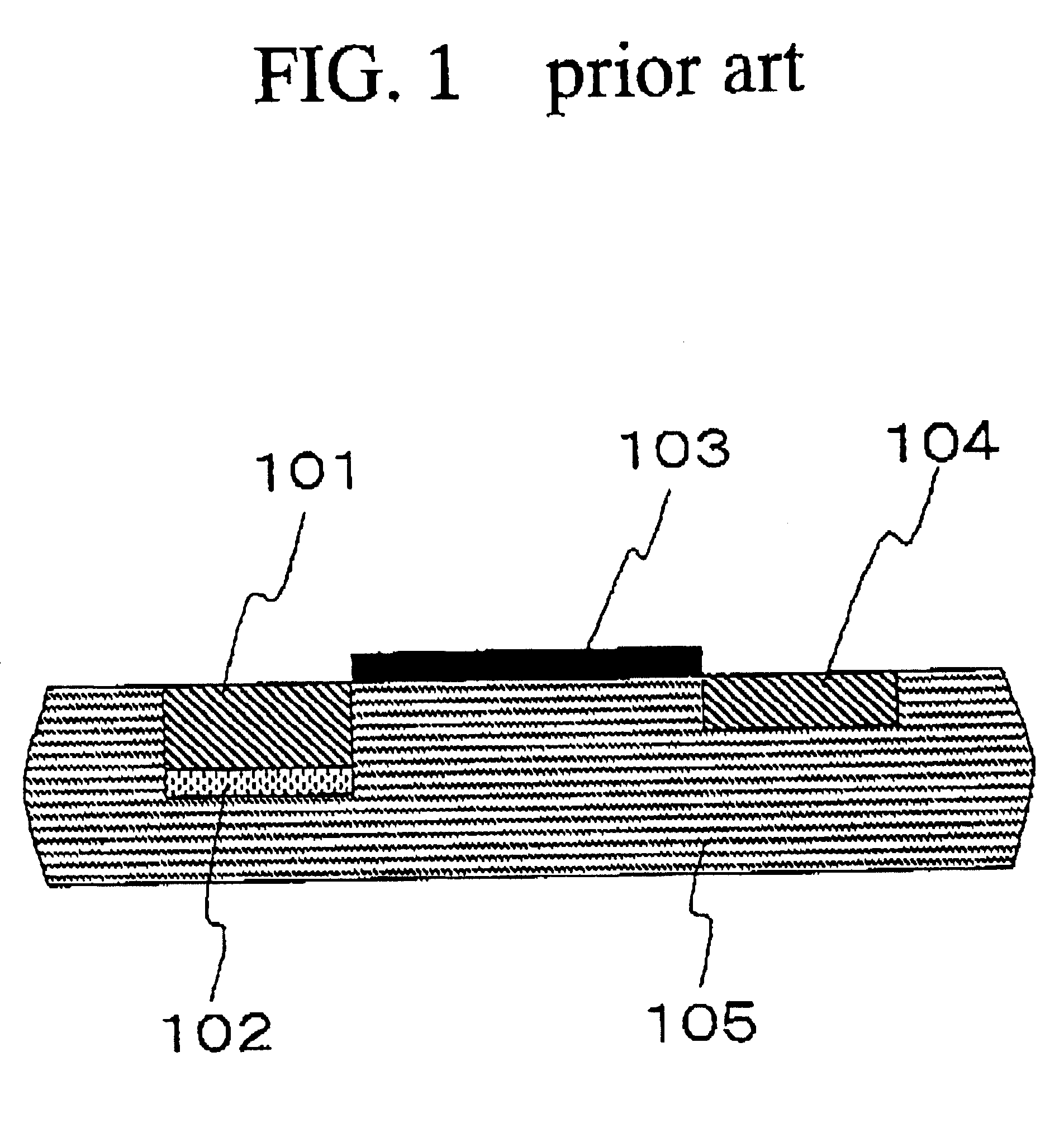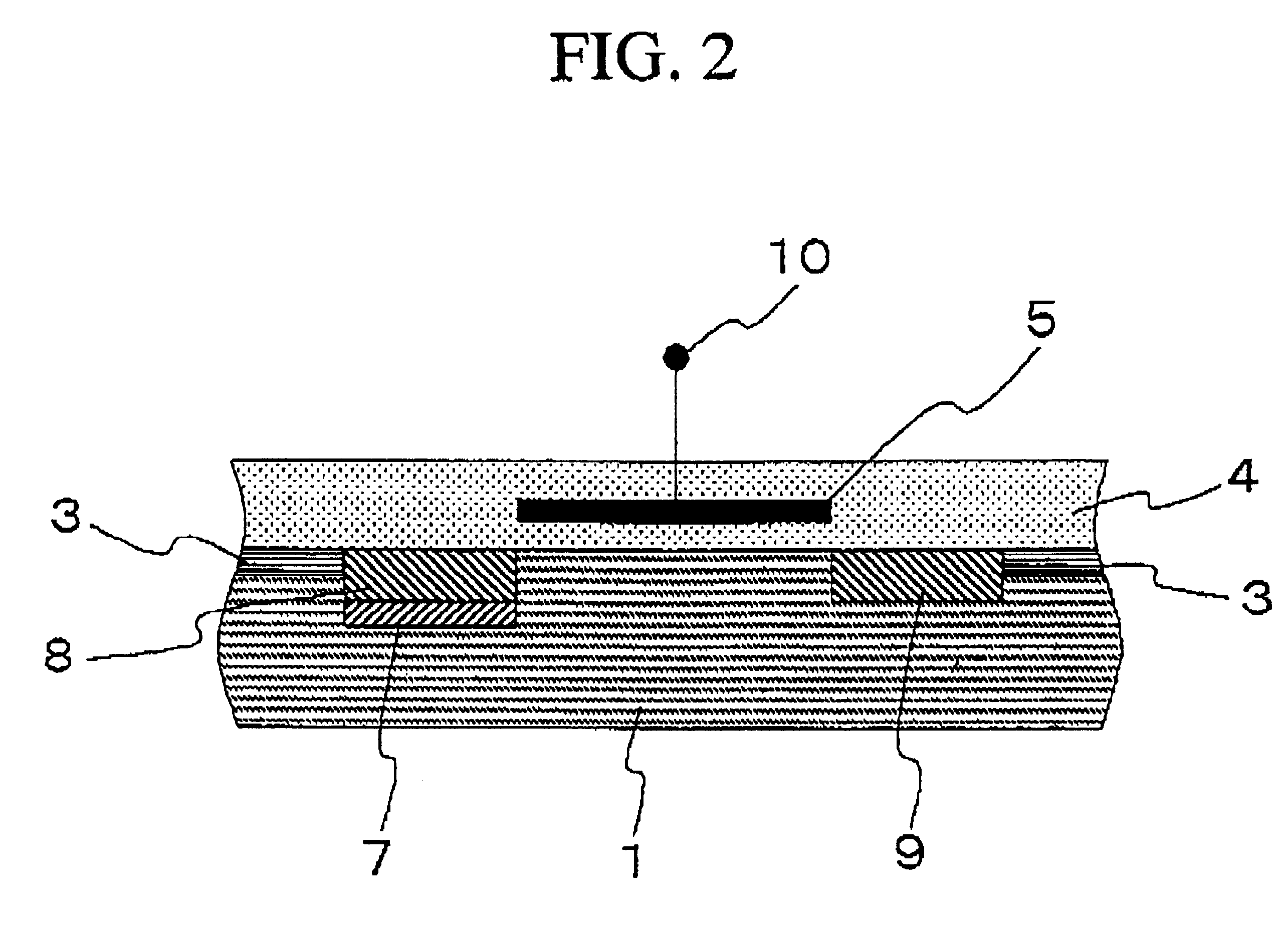Solid-state image sensor with reduced smear and noise
a solid-state image sensor and noise reduction technology, applied in the field of solid-state image sensors, can solve problems such as smear and/or nois
- Summary
- Abstract
- Description
- Claims
- Application Information
AI Technical Summary
Benefits of technology
Problems solved by technology
Method used
Image
Examples
first embodiment
A first embodiment according to the present invention will be described in detail with reference to the drawings. FIG. 2 is a fragmentary cross sectional elevation view of a solid-state image sensor in a first embodiment in accordance with the present invention. The solid-state image sensor has a p-type silicon substrate 1. Isolation regions 3 of silicon dioxide are selectively provided in an upper region of the p-type silicon substrate 1, so that the isolation regions 3 define a device region.
An n-type photoelectric converter region 8 is selectively provided in the device region of the p-type silicon substrate 1. The n-type photoelectric converter region 8 converts incident photons into electric signals. An n-type drain region 9 is also selectively provided in the device region of the p-type silicon substrate 1, wherein the drain region 9 is separated from the n-type photoelectric converter region 8 by a channel region. An insulating layer 4 is provided which overlies an upper face...
second embodiment
A second embodiment according to the present invention will be described in detail with reference to the drawings. FIG. 4 is a fragmentary cross sectional elevation view of a solid-state image sensor in a second embodiment in accordance with the present invention. The solid-state image sensor has a p-type silicon substrate 1. Isolation regions 3 of silicon dioxide are selectively provided in an upper region of the p-type silicon substrate 1, so that the isolation regions 3 define a device region.
An n-type photoelectric converter region 8 is selectively provided in the device region of the p-type silicon substrate 1. The n-type photoelectric converter region 8 converts incident photons into electric signals. An n-type drain region 9 is also selectively provided in the device region of the p-type silicon substrate 1, wherein the drain region 9 is separated from the n-type photoelectric converter region 8 by a channel region. An insulating layer 4 is provided which overlies an upper fa...
third embodiment
A third embodiment according to the present invention will be described in detail with reference to the drawings. FIG. 5 is a fragmentary cross sectional elevation view of a solid-state image sensor in a third embodiment in accordance with the present invention. The solid-state image sensor has a p-type silicon substrate 1. Isolation regions 3 of silicon dioxide are selectively provided in an upper region of the p-type silicon substrate 1, so that the isolation regions 3 define a device region.
An n-type photoelectric converter region 8 is selectively provided in the device region of the p-type silicon substrate 1. The n-type photoelectric converter region 8 converts incident photons into electric signals. An n-type drain region 9 is also selectively provided in the device region of the p-type silicon substrate 1, wherein the drain region 9 is separated from the n-type photoelectric converter region 8 by a channel region. An insulating layer 4 is provided which overlies an upper face...
PUM
 Login to View More
Login to View More Abstract
Description
Claims
Application Information
 Login to View More
Login to View More - R&D
- Intellectual Property
- Life Sciences
- Materials
- Tech Scout
- Unparalleled Data Quality
- Higher Quality Content
- 60% Fewer Hallucinations
Browse by: Latest US Patents, China's latest patents, Technical Efficacy Thesaurus, Application Domain, Technology Topic, Popular Technical Reports.
© 2025 PatSnap. All rights reserved.Legal|Privacy policy|Modern Slavery Act Transparency Statement|Sitemap|About US| Contact US: help@patsnap.com



